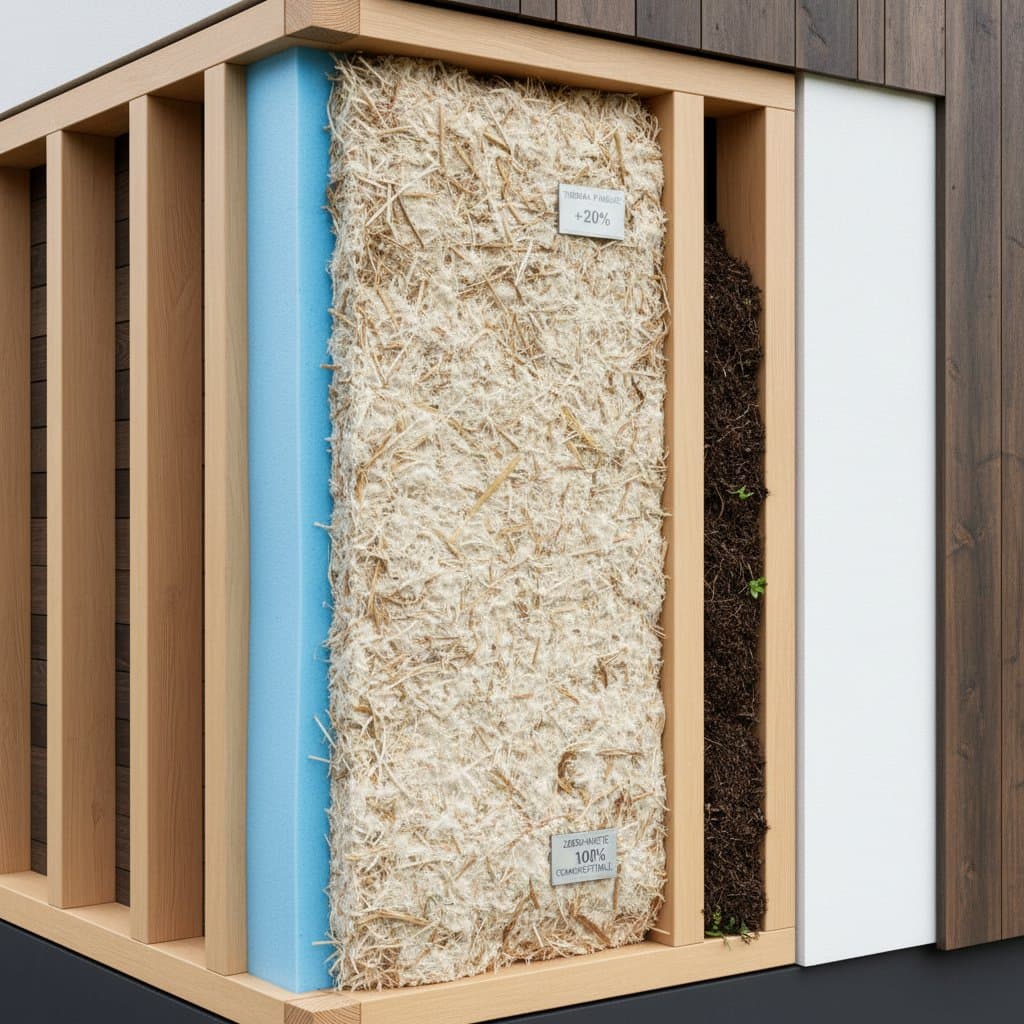Key Points
- Heat pump water heaters reduce household water heating expenses by up to 75 percent.
- These systems transfer heat from ambient air rather than generating it directly, resulting in significantly higher efficiency compared to conventional electric or gas models.
- Achieving maximum savings requires correct installation, ongoing maintenance, and appropriate sizing.
- Available incentives, rebates, and credits for green certifications lower the cost of upgrading to heat pump systems.
- Selecting a system suited to local climate conditions influences actual performance and long-term investment returns.
Envision a Smarter, More Efficient Home
As a professional in green building, I have observed numerous homeowners grappling with escalating energy bills, especially related to hot water demands. Consider stepping into a warm shower on a cold morning; that comfort often comes at a substantial hidden expense. Traditional water heaters consume electricity or gas to sustain water temperature, frequently losing energy through standby inefficiencies.
Heat pump water heaters reverse this inefficiency by drawing heat from surrounding air to warm the water. Homeowners enjoy the identical comfort level while incurring far lower costs. In humid or mixed climates where utility expenses burden many households, this technology provides a viable path to both financial savings and environmental benefits.
Based on extensive field experience, heat pump systems have evolved from specialized options to essential components of energy-efficient home design. They deliver reliable comfort alongside meaningful sustainability advantages.
Limitations of Conventional Water Heating
Standard water heaters transform fuel into heat directly, leading to considerable energy losses during the conversion. Research on building performance indicates that water heating accounts for 15 to 20 percent of a typical home's overall energy consumption. In areas with extended heating periods or elevated water usage, this share increases substantially.
Outdated units exacerbate the issue by operating continuously to preserve temperature. Factors such as mineral accumulation, inadequate insulation, or improper sizing amplify energy waste. Consequently, homeowners face elevated bills and avoidable carbon emissions over time.
Many assume solar solutions offer the primary route to significant reductions, yet heat pump water heaters provide comparable efficiency improvements with greater simplicity and a compact installation footprint.
Mechanisms Behind Substantial Savings from Heat Pumps
Heat pump water heaters operate akin to a refrigerator operating in reverse. They draw thermal energy from the surrounding air and concentrate it within the water storage tank. Electricity powers only the heat transfer process, not heat generation itself.
Efficiency metrics for these units often exceed two to three times those of conventional electric models, yielding more hot water per unit of electricity used. Numerous homeowners report reductions in water heating costs ranging from 60 to 75 percent shortly after installation. Optimal results depend on selecting and positioning the system appropriately.
These units perform most effectively in moderate or warm environments, including garages, basements, or utility rooms with sufficient air circulation. Additionally, they remove moisture from the air, mitigating humidity issues in installation areas.
Strategies to Enhance Home Eco-Efficiency
Drawing from nationwide client consultations, the following approaches optimize heat pump performance and maximize savings:
- Select appropriate capacity: Match the unit's size to your household's daily hot water needs. Oversized models consume excess energy, whereas undersized ones operate inefficiently by cycling frequently.
- Optimize installation location: Position the unit in an area providing at least 700 cubic feet of air volume to facilitate effective heat exchange. Steer clear of confined closets or poorly ventilated spaces.
- Leverage hybrid functionality: Advanced models combine heat pump operation with traditional elements. Activate hybrid mode solely during high-demand intervals to preserve efficiency.
- Ensure unobstructed airflow: Maintain several feet of clearance surrounding the unit to support unrestricted heat transfer.
- Implement regular maintenance: Clean the air filter every three months and flush the tank once a year to eliminate mineral deposits.
- Track system metrics: Opt for smart-enabled units that allow monitoring of energy consumption and customization of operational schedules.
Applying these practices can prolong the system's lifespan beyond 10 years while sustaining peak efficiency levels.
Evaluating Expenses and Available Support
The typical installation cost for a heat pump water heater ranges from $1,800 to $3,200, encompassing professional labor. Although the initial investment surpasses that of basic electric or gas alternatives, energy savings often recoup the expense in three to five years.
Rebates from government initiatives and utility providers commonly range from $300 to $1,000. Participation in green certification programs may yield further credits for energy-efficient water heating. Integrating the upgrade into comprehensive remodels or retrofits amplifies total savings.
Professional installations generally require about half a day. Contractors frequently handle electrical enhancements or venting modifications during the same session.
Factoring in Regional and Climate Variations
Local climate significantly affects system efficacy. In humid coastal areas, ambient air temperatures support consistent, high-efficiency operation throughout the year. Cooler inland regions benefit from hybrid configurations with auxiliary heating to maintain reliable water temperatures.
For homes with constrained indoor areas, split-system designs separate the compressor from the tank, enabling outdoor compressor placement while keeping indoor heating efficient.
As a green building specialist, I advise performing a comprehensive home energy audit prior to installation. This assessment reveals opportunities for supplementary insulation or air sealing to bolster overall system performance.
Broader Environmental Advantages
Adopting a heat pump water heater extends benefits beyond monetary savings. It alleviates pressure on electrical grids and substantially lowers greenhouse gas outputs. By relying on heat extraction rather than combustion, these systems minimize dependence on fossil fuels.
When integrated with renewable energy sources, operational emissions approach zero. The units also enhance indoor air quality by reducing humidity levels. Collectively, these effects foster a healthier living space and contribute to long-term sustainability.
Steps to Implement Your Upgrade
If your existing water heater approaches obsolescence or utility costs continue to rise, consider this transition promptly. Engage a certified green building specialist familiar with regional climates and incentive programs. Obtain a comprehensive proposal detailing projected annual savings, return timeline, and any electrical adjustments required.
Homeowners frequently experience prompt bill reductions and improved hot water reliability post-installation. This choice advances personal sustainability goals while supporting planetary resilience through efficient resource use.








